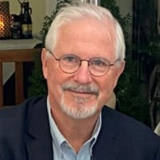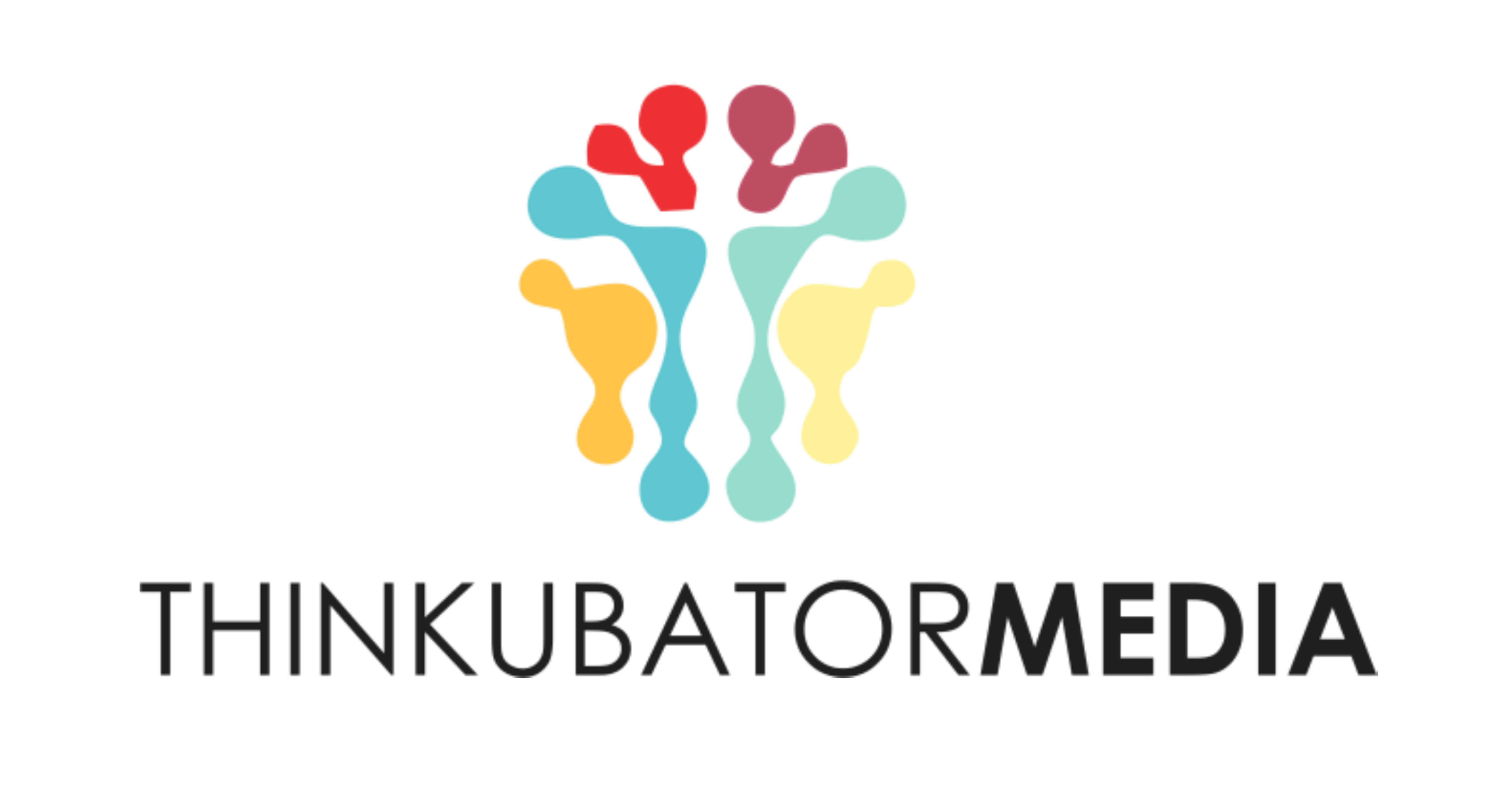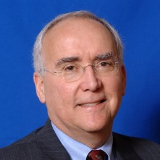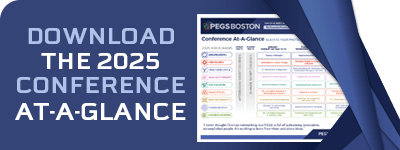Cambridge Healthtech Instituteの初開催
Radiopharmaceutical Therapies
放射性医薬品治療
Precision Medicine for Cancer
がんの精密医療
2025年5月13日 - 14日 EDT(米国東部標準時・夏時間)
放射性医薬品治療は、放射性同位元素のユニークな特性を利用して、さまざまな疾患、特にがんを選択的に標的として治療する医療において急速に進歩しているアプローチです。これらの標的治療は、前立腺がん、神経内分泌腫瘍、リンパ腫、一部の白血病など、さまざまな固形腫瘍や血液悪性腫瘍の治療において有望な結果を示してきました。この分野の進歩に伴い、研究者は患者のアウトカムをさらに向上させるために、新たな標的戦略、新規の放射性同位元素の応用、個別化治療アプローチを模索しています。主要な専門家を招き、ケーススタディを共有し、患者ケアを変革する放射性医薬品治療の大きな可能性を紹介します。
Tuesday, May 13
1:50 pmDessert Break in the Exhibit Hall with Poster Viewing
THE OUTLOOK AND PROMISE OF RADIOPHARMACEUTICAL THERAPIES
Can Radiopharmaceuticals Overcome Cancer Evasiveness?
 Elcin Zan, MD, Chair, Nuclear Medicine, Imaging Institute, Cleveland Clinic
Elcin Zan, MD, Chair, Nuclear Medicine, Imaging Institute, Cleveland Clinic
Radiopharmaceuticals offer a promising approach in cancer treatment by emitting particle radiation that targets cancer cell DNA while minimizing damage to healthy cells. Utilizing the Theranostics approach for real-time imaging, they represent a leap forward in cancer treatment personalization and in understanding how cancer evolves within individual patients throughout the treatment, potentially leading to more adaptive and effective treatment plans. Mechanism of action to be discussed includes:
- New radioisotopes with improved characteristics (half-life, particle radiation type, etc.)
- Better targeting vectors (antibodies, peptides, small molecules)
- Optimizing delivery systems to improve uptake in tumor cells while minimizing exposure to normal tissues
State-of-the-Industry Panel Discussion: The Coming-of-Age of Radiopharmaceutical Therapies
Frank Comer, PhD, Director, Tumor Targeted Delivery, Early Oncology R&D, AstraZeneca
- Investment trends and M&As
- Beyond PSMA, NETS and thyroid cancer
- Dosing and sequencing considerations
- Production and supply chain challenges
- Regulatory guidance reimbursement
3:30 pmSponsored Presentation (Opportunity Available)
4:00 pmRefreshment Break in the Exhibit Hall with Poster Viewing
SPEED NETWORKING
How Many New Contacts Can You Make?
 Kevin Brawley, Project Manager, Production Operations & Communications, Cambridge Innovation Institute
Kevin Brawley, Project Manager, Production Operations & Communications, Cambridge Innovation Institute
Bring yourself and your business cards or e-cards, and be prepared to share and summarize the key elements of your research in a minute. PEGS-Boston will provide a location, timer, and fellow attendees to facilitate the introductions.
BENCH-TO-BEDSIDE TRANSLATION
4:40 pmPresentation to be Announced
Targeting Strategies and Isotope Selection in Cancer Therapy
 John Babich, PhD, Co-Founder, Ratio Therapeutics
John Babich, PhD, Co-Founder, Ratio Therapeutics
Radioligand therapy (RLT) is experiencing a dramatic renaissance in modern medicine. The recent approvals of Xofigo, Lutathera, and Pluvicto have transformed this once-niche field into an area of intense scientific and commercial interest. Successful RLT with an optimal therapeutic index requires the careful application of several key principles. This presentation will explore the fundamental elements necessary for developing effective and safe radioligand therapies.
From DNA-Encoded Chemistry to ACP3-Targeted Radioligand Therapeutics against Prostate Cancer
 Sebastian Oehler, Research Scientist, Small Molecule Therapeutics, Philochem AG
Sebastian Oehler, Research Scientist, Small Molecule Therapeutics, Philochem AG
In contrast to Prostate-Specific Membrane Antigen (PSMA), Prostatic Acid Phosphatase (ACP3) is virtually absent in healthy organs but highly expressed in prostate cancer. We used DNA-encoded chemical libraries to identify highly potent ACP3 ligands which selectively accumulated in ACP3-positive tumor lesions in mice-with curative effects at low and well-tolerated 177Lu doses. Our clincial candidate, OncoACP3, may overcome current limits of PSMA-based ligands for pharmacodelivery applications in prostate cancer patients.
6:10 pmClose of Day
6:10 pmDinner Short Course Registration
6:30 pmRecommended Dinner Short Course
SC7: Nuts and Bolts of Building a Radiopharmaceutical Therapy Agent
*Separate registration required. See short course page for details.
Wednesday, May 14
7:15 amRegistration and Morning Coffee
WORKFORCE INNOVATION BREAKFAST
 PANEL DISCUSSION:
PANEL DISCUSSION:Workforce Transformation: An Evolving Approach to Achieve Innovation
(Continental Breakfast Provided) Co-Organized with Thinkubator Media
 Lori Lennon, Founder & CEO, Thinkubator Media
Lori Lennon, Founder & CEO, Thinkubator Media
This panel will explore the pivotal decisions shaping our approach to DEI, focusing on workforce innovation and transformation. Panelists will discuss how these strategies are driving impactful change within organizations, fueling innovation, and redefining workplace culture.
PLENARY KEYNOTE SESSION
Ex vivo and in situ Engineered Stroma Targeted CAR T Cells for the Treatment of Solid Tumors and Fibrosis
 Ellen Puré, PhD, Chair & Professor, Biomedical Sciences, University of Pennsylvania
Ellen Puré, PhD, Chair & Professor, Biomedical Sciences, University of Pennsylvania
Engineered chimeric antigen receptor expressing T cells (CARTs) have had a major impact on the treatment of hematopoietic cancers. Solid tumors however, are largely resistant to malignant cell-targeted CAR Ts due to a stroma-rich microenvironment. This talk will provide proof-of-concept for therapeutic efficacy of ex vivo and in situ engineered stroma-targeted CAR Ts in solid tumors and tissue fibrosis, and their capacity to synergize with chemo- and other immune-based therapies.
9:35 amCoffee Break in the Exhibit Hall with Poster Viewing
ENTREPRENEUR MEET-UP
Fostering Entrepreneurship and Models for Start-Ups
Natalie Galant, CEO of Paradox Immunotherapeutics and Termeer Fellow, and Catharine Smith, Executive Director of the Termeer Foundation, are co-hosting an entrepreneurship meet up.
Are you a founder or aspiring founder? Are you an academic entrepreneur? Join Natalie and Catharine and PEGS attendee founders and entrepreneurs for networking and discussion.
We will discuss existing resources for academic entrepreneurs, founders, and start-up leaders, and areas where the ecosystem can better support you.
Keys to the Success of Radiopharmaceutical Therapy
 George Sgouros, PhD, Professor & Director, Radiological Physics Division, Department of Radiology, Johns Hopkins University School of Medicine
George Sgouros, PhD, Professor & Director, Radiological Physics Division, Department of Radiology, Johns Hopkins University School of Medicine
Radiopharmaceutical Therapy (RPT) is generally defined as “The delivery of radioactive atoms to tumor associated targets.”(Sgouros, Nat Rev Drug Discov. 2020). Use of radioactive atoms as the cytotoxins is key to the success of RPT because radioactive atoms can also be imaged and thereby the targeting of these agents may be assessed in humans. In that sense the use of radioactive atoms can also be a potential source of failure because it is much easier to administer a non-radioactive drug then a radioactive drug. For this reason the ability to image and determine the pharmacokinetics of the radiopharmaceutical therapeutic is what holds the key to the success of RPT. If these agents are used as radioactive chemotherapeutics, the advantages of imaging and understanding the pharmacokinetics will be lost and the advantage will go to conventional (i.e., non-radioactive) therapeutics. The presentation will expand on the idea that, although logistically burdensome, optimization via imaging, dosimetry and pharmacokinetics in humans holds the keys to success of this treatment modality.
Challenges and Pitfalls in Design of Next-Generation Radiopharmaceutical Therapies
 Daniel Stevens, CMO, Blue Earth Therapeutics Ltd
Daniel Stevens, CMO, Blue Earth Therapeutics Ltd
Creation of another "me-too" agent is no longer good enough, nor is a development program that does not directly address positive differentiation early on. Radiopharmaceuticals offer unique opportunities to address these issues. The talk will explore strategies to address both structured design of better agents, and on options for development programs to de-risk new agents
Isotope Selection, Acquisition, and Production-Challenges and Opportunities
11:55 amSession Break
12:00 pmLuncheon Presentation (Sponsorship Opportunity Available) or Enjoy Lunch on Your Own
INTERACTIVE DISCUSSIONS
Interactive Breakout Discussions are informal, moderated discussions, allowing participants to exchange ideas and experiences and develop future collaborations around a focused topic. Each discussion will be led by a facilitator who keeps the discussion on track and the group engaged. To get the most out of this format, please come prepared to share examples from your work, be a part of a collective, problem-solving session, and participate in active idea sharing. Please visit the Interactive Breakout Discussions page on the conference website for a complete listing of topics and descriptions.
CLINICAL ADVANCES
Clinical Update on CONV01-Alpha-An Ac-225 Containing Radioantibody Targeting PSMA
 Philip W. Kantoff, MD, Co-Founder & CEO, Convergent Therapeutics
Philip W. Kantoff, MD, Co-Founder & CEO, Convergent Therapeutics
PSMA is a validated cancer target in metastatic CRPC. Use of an alpha emitter as a radionuclide and a high affinity monoclonal antibody offers the promise of improved potency and accuracy of PSMA-targeted therapy. 225Ac-J591 has been evaluated for safety and efficacy in academic investigator-initiated trials with promising results. CONVERGE-01 is an industry-sponsored study of CONV01-alpha (225Ac-J591) in patients with progressive PSMA PET-positive CRPC. Enrollment began in August 2024.
Redefining Radiopharmaceuticals: An Innovative Pipeline
 Pamela Habib, MD, CMO, Therapeutics, Telix Pharmaceuticals Ltd.
Pamela Habib, MD, CMO, Therapeutics, Telix Pharmaceuticals Ltd.
Telix is a therapeutic radiopharmaceutical company, committed to precision oncology. Our theranostic pipeline focuses on critical unmet medical need in urologic oncology, neuro-oncology, musculoskeletal oncology, and hematology. For each target we develop a radiodiagnostic imaging agent, along with a therapeutic candidate, including beta and alpha therapies. Our objective is to bring to market first-in-class or best-in-class theranostics by selecting isotopes and targeting agents that are tailored to each clinical application.
[18F]FAPI-74 PET in Gastrointestinal Cancers-Addressing an Unmet Need
 Sherly Mosessian, PhD, CSO, SOFIE
Sherly Mosessian, PhD, CSO, SOFIE
Fibroblast Activation Protein has emerged as a promising target of radiopharmaceuticals in imaging and therapy. Here we discuss the current state of FAP targeting for imaging in gastrointestinal cancers. In addition, we will highlight the latest clinical development and regulatory efforts with [18F]FAPI-74 in the United States.
Developing a Radiopharmaceutical Clinical Operations Strategy - Trials and Tribulations
 Lauren Creeden, Head of Clinical CMC Execution, Clarity Pharmaceuticals
Lauren Creeden, Head of Clinical CMC Execution, Clarity Pharmaceuticals
Developing a radiopharmaceutical clinical operations strategy presents unique challenges and opportunities. This talk explores the intricacies of designing and executing clinical trials in this complex field, highlighting common obstacles such as regulatory hurdles, logistical constraints, and patient recruitment in specialized populations. It also discusses innovative approaches and best practices to streamline operations and enhance collaboration across multidisciplinary teams.
4:00 pmIce Cream Break in the Exhibit Hall with Poster Viewing
TARGETING MECHANISMS-ANTIBODIES & BEYOND
Self-Assembling and Disassembling Bispecific Fusion Proteins for Pretargeted Radioimmunotherapy: Preclinical Perspectives and Trials in Progress
 Norman D. LaFrance, MD, Chief Development Officer, Y mAbs Therapeutics Inc.
Norman D. LaFrance, MD, Chief Development Officer, Y mAbs Therapeutics Inc.
Investigational approaches to pretargeted radioimmunotherapy (PRIT) are designed to optimize the delivery of cytotoxic radiation to tumors, whilst limiting exposure to normal “off-target” tissues. Here, we’ll present the scientific rationale and preclinical evidence supporting the clinical development of self-assembling and disassembling bispecific fusion proteins used in two-step PRIT for the treatment of solid and hematological malignancies.
Bicycle-Radionuclide Conjugates
 Monika Maciuszek, PhD, Sr Scientist, Peptide Medicinal Chemistry, Bicycle Therapeutics
Monika Maciuszek, PhD, Sr Scientist, Peptide Medicinal Chemistry, Bicycle Therapeutics
Bicycle molecules are a novel molecule formed by constraining short linear peptides into a stabilized bi-cyclic structure using a central chemical scaffold. Using Bicycle's proprietary phage platform, de novo binders to important targets can be identified with ideal properties for radioisotope delivery. Bicycle Radionuclide Conjugates (BRCs) contain a Bicycle molecule targeted to a specific tumor antigen and a highly potent radioisotope, making BRC molecules potentially suited to cancer imaging and therapy.
Affibody Molecules as Engineered Carriers in Molecular Radiotherapy with Tezatabep Matraxetan for PET Patient Selection & ABY-271 for Beta Radioligand Therapy
 Fredrik Frejd, PhD, CSO, Affibody AB
Fredrik Frejd, PhD, CSO, Affibody AB
Radioligand therapy is an emerging tool in cancer treatment with recently demonstrated medical and commercial value. A challenge, however, is the generation of efficient tumor-targeting radionuclide carriers with sufficiently low normal organ exposure. Affibody molecules are minimized protein domains with very high tumor targeting capacity as demonstrated in recent trials with HER2 targeting tezatabep matraxetan in patients with metastatic breast cancer. The HER2 binder has in recent development been engineered for reduced kidney uptake and improved tumor load resulting in a radiotherapeutic drug which is currently in late IND-enabling studies. Preclinical development and theranostic patient selection will be discussed.
Utilizing the Potential of CXCR4-Targeting Radiotheranostics in Oncology and Beyond
 Lisa Kalfhues, PhD, Scientific Program Manager, Pentixapharm
Lisa Kalfhues, PhD, Scientific Program Manager, Pentixapharm
Increased expression of CXCR4 has been observed in benign adrenal tumors and in over 20 malignant cancers. Our clinical pipeline includes PentixaTher, a Yttrium-90 based therapeutic, and PentixaFor, a Gallium-68 based companion diagnostic. We will present how we are using both as a theranostic pair in oncology and highlight the potential of PentixaFor outside of oncology as a diagnostic tool for primary aldosteronism (PA), an important cause of hypertension.
6:40 pmNetworking Reception in the Exhibit Hall with Poster Viewing
7:40 pmClose of Radiopharmaceutical Therapies Conference
* 不測の事態により、事前の予告なしにプログラムが変更される場合があります。
アジェンダ・講演者・スポンサー更新
2025年 プログラム
表示する:

工学ストリーム

腫瘍ストリーム

多重特異性ストリーム

免疫療法ストリーム

発現ストリーム

分析法ストリーム

免疫原性ストリーム

新興治療ストリーム

機械学習ストリーム




















